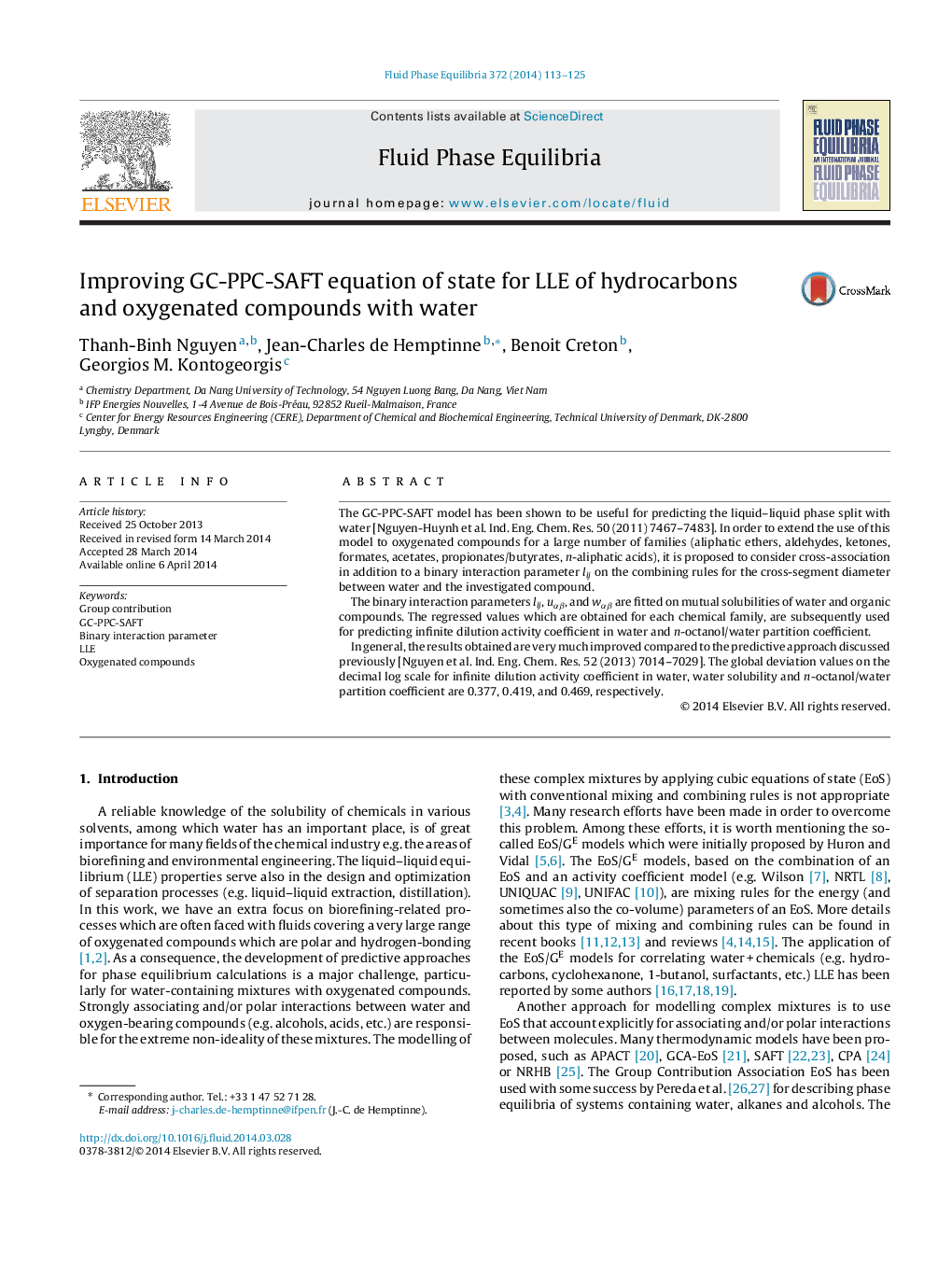| کد مقاله | کد نشریه | سال انتشار | مقاله انگلیسی | نسخه تمام متن |
|---|---|---|---|---|
| 202540 | 460608 | 2014 | 13 صفحه PDF | دانلود رایگان |

• SAFT extended to liquid–liquid equilibria of water with oxygenated hydrocarbons.
• Cross-association shows coherent trend with temperature and chemical family.
• Binary interaction parameter on hard-sphere diameters is used.
• Predicted KoW of good quality.
The GC-PPC-SAFT model has been shown to be useful for predicting the liquid–liquid phase split with water [Nguyen-Huynh et al. Ind. Eng. Chem. Res. 50 (2011) 7467–7483]. In order to extend the use of this model to oxygenated compounds for a large number of families (aliphatic ethers, aldehydes, ketones, formates, acetates, propionates/butyrates, n-aliphatic acids), it is proposed to consider cross-association in addition to a binary interaction parameter lij on the combining rules for the cross-segment diameter between water and the investigated compound.The binary interaction parameters lij, uαβuαβ, and wαβwαβ are fitted on mutual solubilities of water and organic compounds. The regressed values which are obtained for each chemical family, are subsequently used for predicting infinite dilution activity coefficient in water and n-octanol/water partition coefficient.In general, the results obtained are very much improved compared to the predictive approach discussed previously [Nguyen et al. Ind. Eng. Chem. Res. 52 (2013) 7014–7029]. The global deviation values on the decimal log scale for infinite dilution activity coefficient in water, water solubility and n-octanol/water partition coefficient are 0.377, 0.419, and 0.469, respectively.
Journal: Fluid Phase Equilibria - Volume 372, 25 June 2014, Pages 113–125